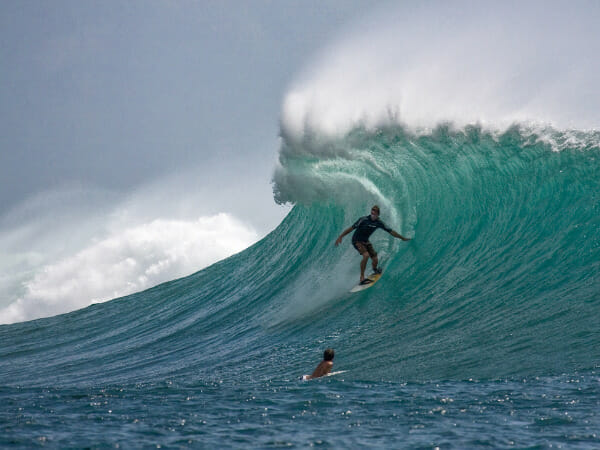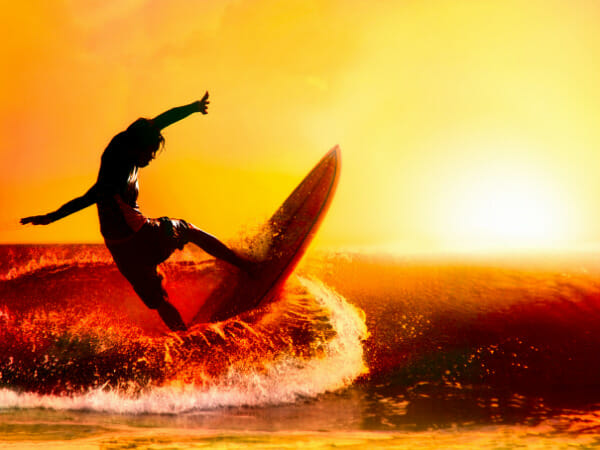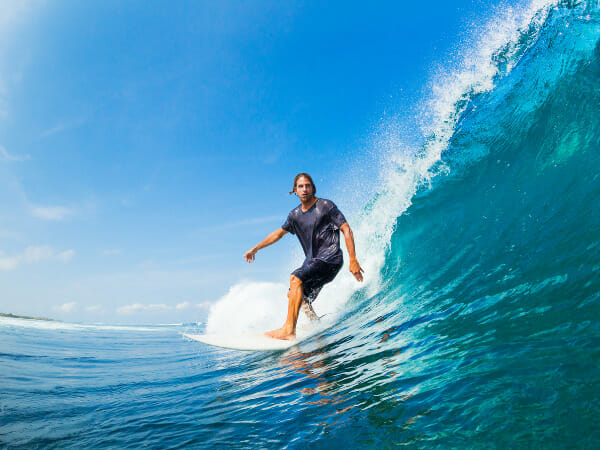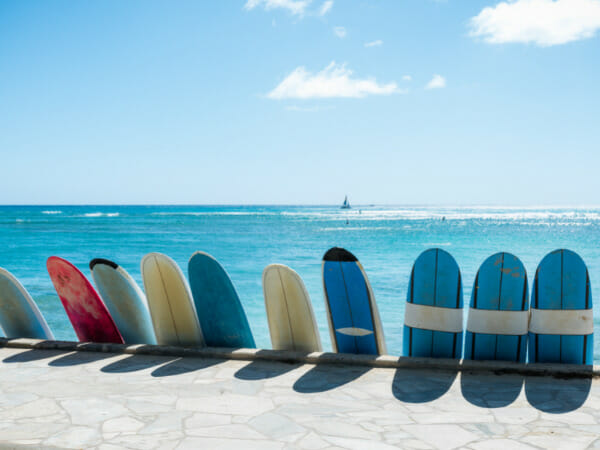Countdown to summer: tips for learning how to surf
Suppose you are new to surfing and curious about all the water sport entails. In that case, this will be the best guide you will ever read as a first-time surfer because I will discuss the exciting art of surfing, the safety precautions required, and the things you would need before you hit the ocean.
Of all beach sports, this sport is the most thrilling. Those who limit themselves to boat cruising or beach tennis (on the sand) are missing out on the company of cute dolphins, the random splash of water in the fun-filled ocean, and the mind-blowing speed of ocean waves/tides.
Types of Surfing

The archaeological evidence that dates back to five thousand years ago infers that Peruvians are the pioneers of Surfing. The earliest type of this water sport was bodysurfing, which was practiced by ancient fishermen for fishing and recreation.
Unlike bodysurfing, Standup paddleboarding (SUP) is a modern style created by Polynesians(people who lived on the islands in the Polynesian Triangle)). SUP has its roots in Hawaii’s surfing culture. Other types of Surfing include windsurfing, wave surfing, skimboard surfing, wakeboard surfing, big wave surfing, etc.
Windsurfing
In the words of sports legend Roby Naish, windsurfing is Surfing’s ginger-haired cousin. Unlike other types of this water sport, windsurfing relies more on wind movement than ocean waves or tides. It can also be classified as a form of sailing, plus you can windsurf on any body of water, be it a river, lake, ocean, or estuary. It would help if you had a windsurf board to practice this water sport. The windsurf board is primarily made of mast, sail, and boom.
Skimboard Surfing
Skimboarding, also known as skimming, is a board sport highly inspired by land skating. Skimboarders perform skating tricks like shove-its and ollies on water using a skimboard, a smaller surfboard version without fins. Unlike normal Surfing, skimboarding requires surfers to drop the skimboard on the thin wash of former waves, then take advantage of the momentum to skim out to breaking currents.
Wakeboard Surfing
Like windsurfing, wakeboarding can be done on any body of water. Instead of riding a wave, the surfer rides the wake of a boat without being attached to the boat. At first, the surfer trials the boat using a tow rope, then releases the rope and rides the steep face under the wave’s zenith as surfers do.
Standup Paddle Boarding
Stand-up paddleboarding originates from Hawaii. The stand-up paddleboarder relies on a board that floats in water and a paddle to move through water bodies. SUP activities can vary from paddling to racing and fishing.
Bodysurfing
Bodysurfing is not your regular Surfing which requires a surfboard. Bodysurfers ride waves without the help of buoyant devices like bodyboard. The accessories used in bodysurfing include a pair of swim fins that help them catch and take advantage of ocean waves, unlike a regular swimmer trained in still waters.
Big Wave Surfing
Big wave surfing is a field suitable for pro surfers. It involves riding in waves as high as 20 feet. The surfboards required for big waves are dubbed guns or tow-boards. Due to the high-risk nature of big waves, it is not recommended for starters or amateurs.
What can you expect from a surf session?
For amateur paddlers, a 2-hour surf session is pretty laudable. However, a regular surf session lasts for about 1-2 hours. Surfing for two hours can feel like forever when you are just starting, but as you gain more experience, you can surf for 5 hours.
How to transcend from amateur paddlers to experienced surfers is quite simple. Practice more often, and don’t forget to enjoy the process. The mistake many paddlers make is that they fail to enjoy the sport and dedicate most of their amateur days to learning their skills.
It is pretty understandable if you put pressure on yourself as an athlete, but the beauty of the sport is only realized by simply enjoying it. Also, people who intend to take this water sport to professional heights need a sponsor or agent as Surfing is a costly sport.
If you don’t have a part-time job, coping with the expensive demands can ruin your credit score before you have a shot at becoming a professional paddler. If you cannot afford a professional instructor, you can learn from an experienced friend.
As a pro surfer, you can make between $200,000 to $2 million annually, depending on how good you are at Surfing. If you access the right equipment and trainers, you can progress from an amateur to a pro in 6 months.
Do you have to be a good swimmer before Surfing?
Absolutely yes. It’s like asking if you need to learn to walk before running. You must realize that no one will be responsible for your safety in the ocean; hence, you should be equipped with swimming skills.
It does not matter if you learned how to swim in a controlled pool, but you should avoid bumping into a great wave as an amateur swimmer. To paddle well and balance against factors of nature like water, and wind, while bodysurfing, you need to be a swimmer with a high skill level. Surfing without having the necessary skills is like risking your life.
What are surf camps?
Learning this sport alone can be challenging, especially if you lack the proper guidance and knowledge. A surf camp, surf house, or surf hotel provides you shelter, food, a community to learn to surf from, and most especially, surfing lessons. A camp is simply a cam for paddlers or surfers.
While the trio – serves the same purpose, they differ slightly. This camp accommodates a group of many surfers. Everyone is given the same guide, taught weekly, with Sunday being the only resting day. Surf hotels offer the same service, but you can check in any day. For those who want a flexible surfing schedule and first-class treatment, hotels are the bee’s knees.
The attendants of surf houses are relatively microscopic, and the training program is designed for the clients, for example, tourists, groups of pals, or couples. The common thing between a surf hotel and a surf house is that both feature trainers, unlike a surf camp where the organizer is most likely the trainer.
To know the best spots near you, use Google maps and check their reviews to be on the safe side. For example, search for the best surf camp in Costa Rica or the best hotel in California. It depends on your location. Surf houses or personal training sessions help you speed up your learning curve whether your level is intermediate, beginner, beginner-advanced, or pro.
What should I expect at a surf camp?
Every camp differs as the themes and organizers vary. However, there are fundamental similarities that you can expect from a camp. These basic features include accommodation for the duration of the camp, food (breakfast and dinner), surf equipment, lessons, a guide, and instructors.
How much do surf camps cost?
Surf camps can cost from $105 to $6000. It depends on the population of people attending and the location. Also, the ratio of coaches to students can be determining factor when it comes to the price charged.
What is the best part of Surfing?
Yes, this water sport is fun. Most exercises make you feel bored and tired, but Surfing makes you feel alive. It helps all your body parts gain muscle tone and endurance.
When you are not surfing, you can have more fun in the sun. The best part is that you’ll bond with other surfers and spend quality time with your loved ones. If you are tired of the spot in your local area, you can go on vacations to places like Costa Rica.
Related Articles
Becoming a pro takes practice, but the joy of being a pro paddler is immeasurable. Once the sport makes it into your subconscious mind, you will feel like part of the ocean. Learning under great instructors helps you gain knowledge outside the scope of this water sport.
Final Thoughts
Given that Surfing is an individual sport, the need for a team is not paramount, yet you need a coach if you want to become the world champion. When you are not surfing, the beach is an excellent place to party with friends, rest, imagine and write poems, enjoy the thrill of the oceans, and play beach games.
It is difficult for those looking for free means to learn this water sport. The only quality free course you will get out there can only be offered by a friend or relative. Outside that, an intermediate surfing course is expensive.
Don’t forget that waiting for another wave is more honorable than catching a wave or swell that’s not yours. The ocean is one of the gifts of the natural world we live in; hence we have to keep it clean.
Frequently Asked Questions
Below are the common questions asked by surfers.
What is dropping in Surfing?
When surfing, ‘dropping in’ is considered a bad practice. You drop in when you aim for and catch someone else’s wave. By doing that, you take advantage of the surfer in question and get ahead of them. Unlike racing, this sport is all about enjoying the wave while it lasts and ensuring that others are also having a good time. Catching a wave that another person is up and riding is not cool. The cool thing to do is wait for the next wave before paddling.
What do you need to become a surfer?
The surfing equipment you would need to learn Surfing includes the surfboard, wetsuit, surfboard leash, fins, wetsuit booties, board bag, watch, wax, and hooded towel. While everything listed in this section is helpful in your journey to becoming a pro surfer, you can do this sport without purchasing 100% of these items.




